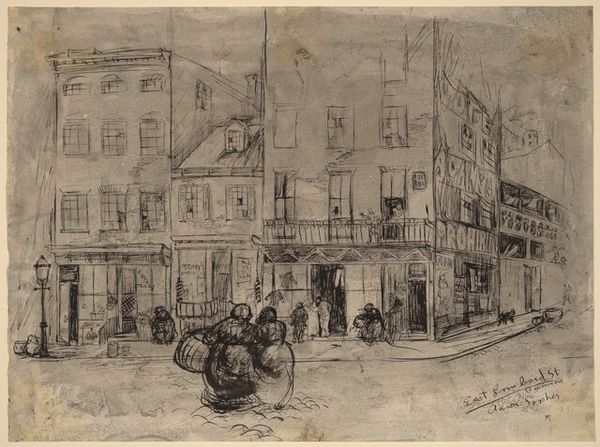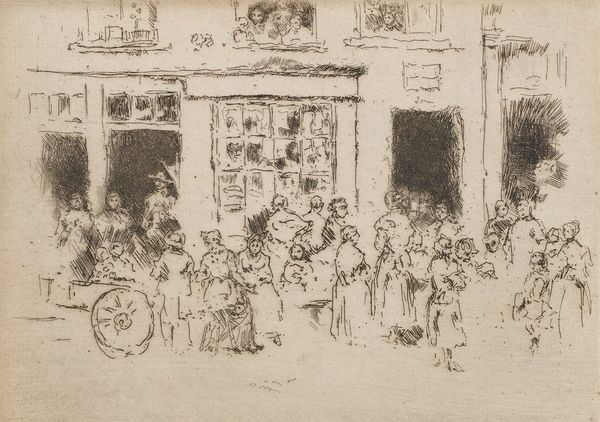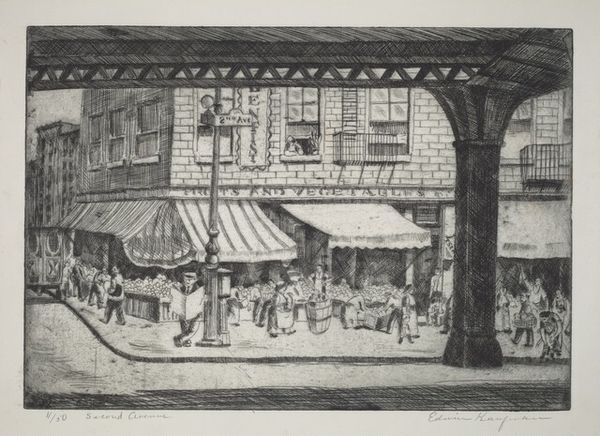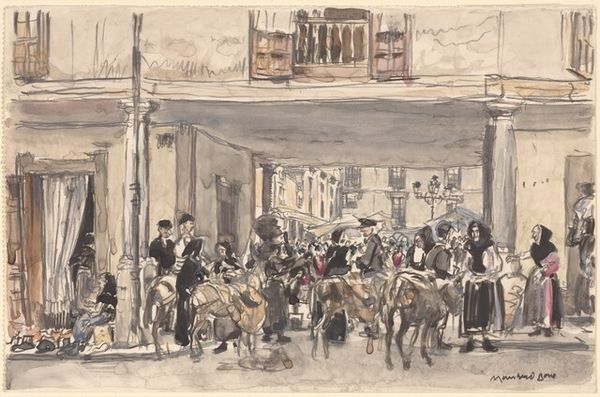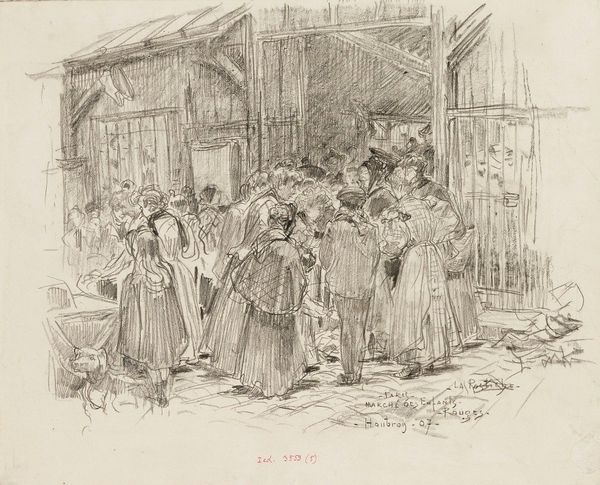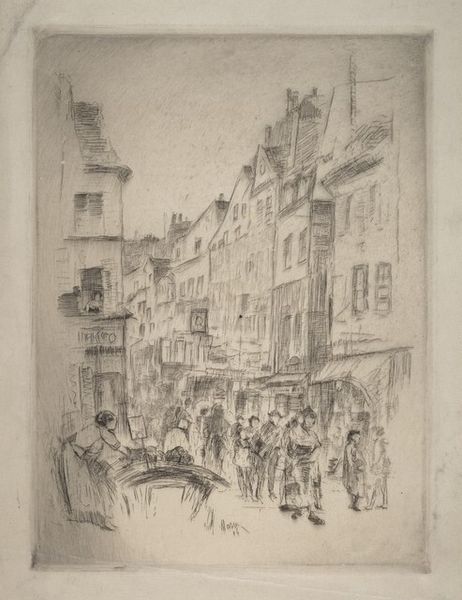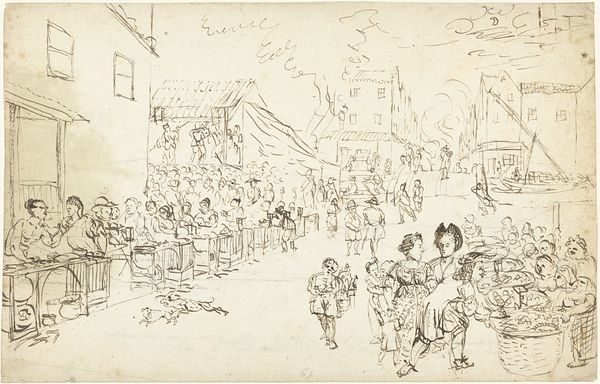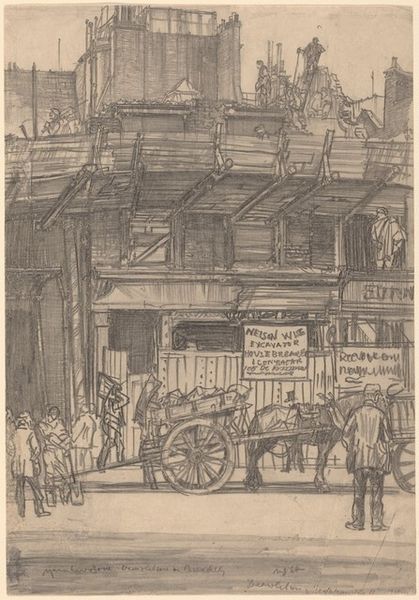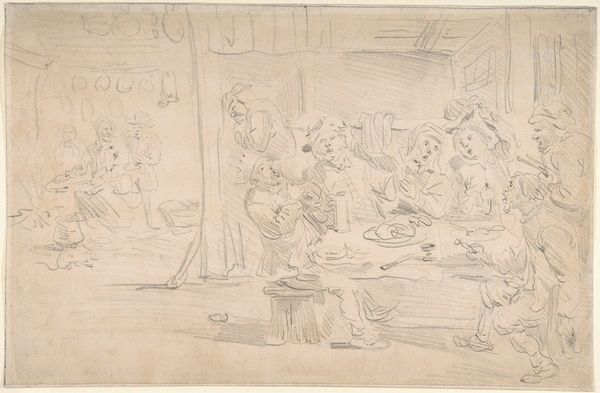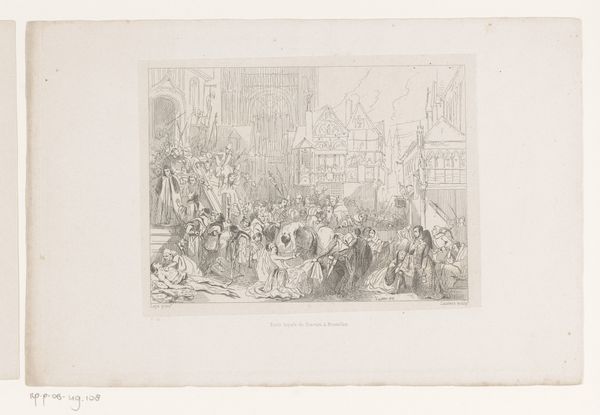
drawing, print, etching, ink
#
drawing
#
ink drawing
# print
#
etching
#
ink
#
cityscape
#
genre-painting
#
realism
Dimensions: plate: 202 x 252 mm sheet: 261 x 315 mm
Copyright: National Gallery of Art: CC0 1.0
Editor: So, here we have Olga Rosenson's "The Stand, No. 2," created around 1922. It seems to be an etching and ink drawing, showing a bustling city market. I'm struck by the density of figures and how they're all interacting. What do you see in this piece, beyond just the obvious market scene? Curator: I see a carefully constructed image of community and survival. Notice the repetition of covered heads and modest clothing, these recurring shapes and forms connect the women to a heritage rooted in traditions. Do you see how those simple, almost iconic, figures, are all huddled together, bargaining for sustenance? Editor: Yes, they are quite tightly grouped. What's the effect of depicting them that way? Curator: I believe it speaks to a sense of shared experience, maybe even shared hardship. This isn't just commerce; it’s a cultural ritual of exchange. This artwork speaks to cultural memory through recognizable archetypes in dress, gesture, and setting. Do you sense a certain emotional weight carried by this scene? Editor: I think I do. It’s not just a snapshot, but almost a…statement about this community at that time. Almost a melancholic undertone? Curator: Exactly. Etching, in its delicate detail, preserves an understanding and memory, while hinting at impermanence, like cultural practices constantly evolve yet persist. The market, in turn, represents sustenance. It creates the cultural and emotional fabric binding its people. Editor: I didn't consider that depth at first. So it is not just representing the people in this market but symbolizing larger truths and ideas about heritage, memory and how people preserve tradition, making it an incredibly evocative portrayal of immigrant community. Curator: Precisely. These visual echoes through time help to create collective memory, transforming ordinary lives into enduring narrative, creating lasting bonds among communities of the past and present.
Comments
No comments
Be the first to comment and join the conversation on the ultimate creative platform.
